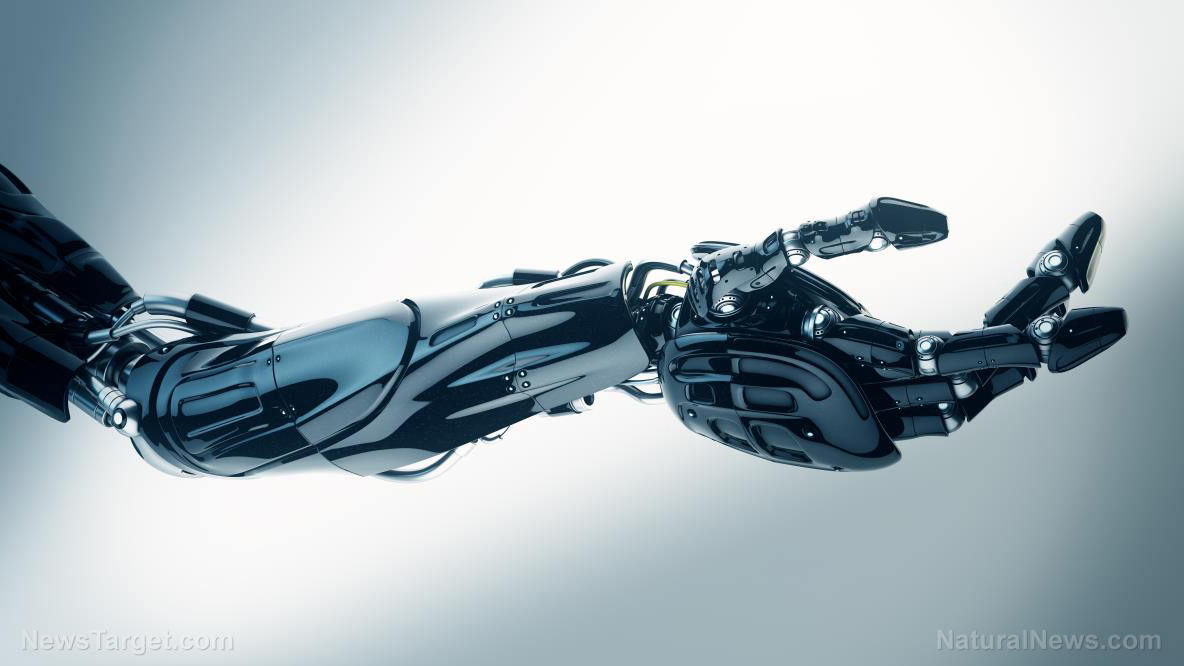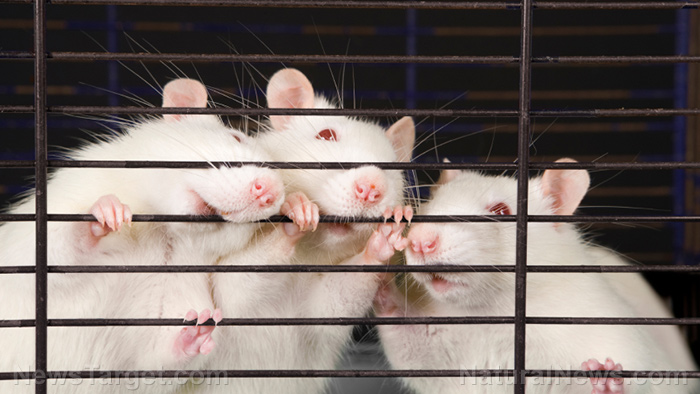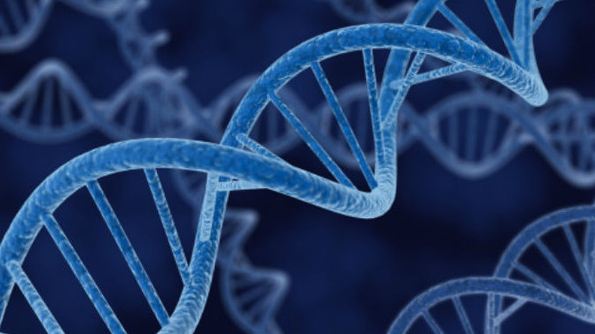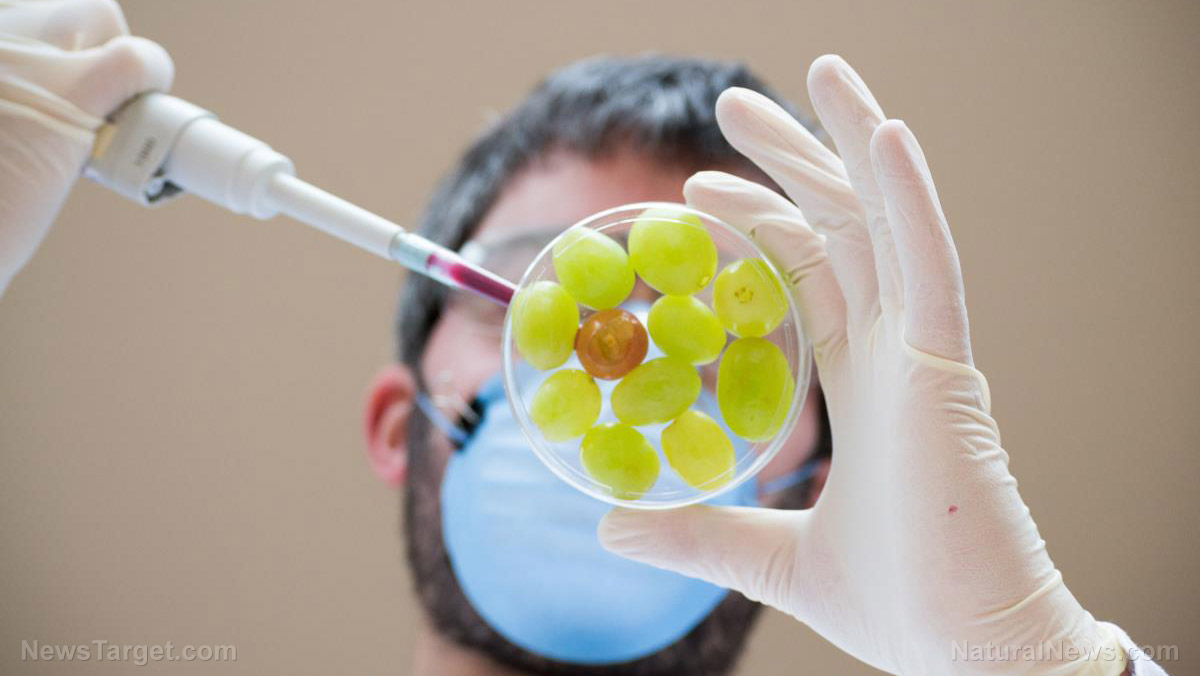The rise of Terminator-like machines: Biohybrid robot made with muscles grown from hydrogel sheets
07/31/2018 / By Edsel Cook

What did Japanese researchers do when they found a new way to grow biological muscles out of hydrogel sheets? Why, make cyborgs, of course. An article in Science Daily detailed how they created a robot with living tissue over a metal endoskeleton using their newly developed technique.
This prototype is the latest Frankensteinian creation of biohybrid robotics, which combines biological tissue and inorganic machines. Biohybrid robots use living muscles that can power their movement and enable them to perform complex actions.
However, there have been difficulties with adding living muscles to nonliving robots. The muscles have not been able to deliver adequate force. They also tend to shrink in size over time, which reduced their functionality.
University of Tokyo (UT) researchers reported that they have solved these issues. They made a new method of growing biological muscles by starting with individual precursor cells, progressing up to sheets filled with muscle cells, and then finishing with complete skeletal muscle tissues.
The fully functional muscles were installed on several biohybrid robots. The muscles arranged in the same way as their counterparts in the human body. Thanks to this arrangement, the robots displayed lifelike movement and were able to maintain the function of their muscles for more than a week. (Related: Commercially available exoskeletons should be used with caution by workers doing heavy lifting.)
Japanese researchers grow living muscles upon the metal skeletons of robots
The UT team designed an appropriate skeleton for the biohybrid robot that was intended to mount the muscle tissue. The skeleton featured a rotating joint, attachment points for the muscles and electrodes that would trigger the muscles into contractions.
Normally, the muscle tissues for the biohybrid would be taken from living animals. However, the researchers were able to grow their own tissue in the lab from scratch.
Their technique involved hydrogel sheets that contained myoblasts, the precursor cells that grow into muscle cells. They mounted these sheets on the anchor points on the robot skeleton. Stripes on the sheets guided the growing muscle fibers to align themselves into the proper shape.
“Once we had built the muscles, we successfully used them as antagonistic pairs in the robot, with one contracting and the other expanding, just like in the body,” reported Shoji Takeuchi, the UT researcher who served as the corresponding author of the study. “The fact that they were exerting opposing forces on each other stopped them shrinking and deteriorating, like in previous studies.”
Living muscles give lifelike motions to biohybrid robot arms
The capabilities of the new biohybrid robots were tested in various ways. In one test, a single robot picked up a set and moved it to a different location. Another test involved two robots working together to lift a square frame into place.
These tests demonstrated that the robots could accomplish complex tasks. The muscles worked as predicted, being able to get a mechanical finger on the other end of the robot arm to flex by 90 degrees.
“Our findings show that, using this antagonistic arrangement of muscles, these robots can mimic the actions of a human finger,” reported Yuya Morimoto, the lead author of the study. “If we can combine more of these muscles into a single device, we should be able to reproduce the complex muscular interplay that allow hands, arms, and other parts of the body to function.”
Morimoto and Takeuchi published their study in the science journal Science Robotics. They believe their advancements will allow biohybrid robots to exceed their current mechanical limitations and move as if they were living, organic limbs.
Read more articles about the increasing capabilities of biohybrid robots at Robots.news.
Sources include:
Tagged Under: biohybrid robot, biohybrid robotics, biological tissue, biotechnology, breakthrough, cyborgs, future science, future tech, hydrogel sheets, innovation, inorganic machines, muscle tissue, myoblasts, robot arms, robotic arm, robots, science and technology, skeletal muscle tissue


















